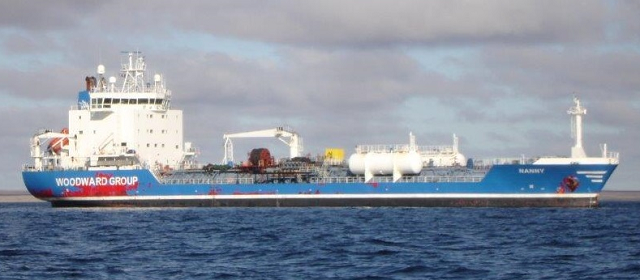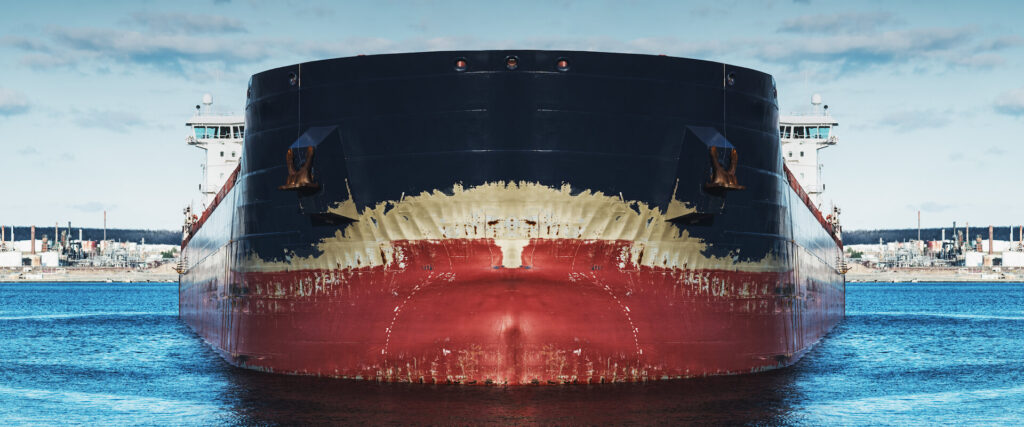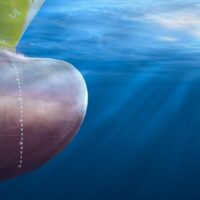Double hulls are a preventive measure implemented to reduce the risk of ship-source pollution in the marine environment.
The Advantages of Double Hull Tankers
Vessels with single hulls pose a greater threat to the marine environment in the event of an incident compared to ships with double hulls. Ships with single hulls have only one layer of watertight structure between their cargo and the ocean. In comparison, as the name suggests, ships with double hulls have two watertight layers on the bottom and sides of the ship. Studies show that depending on impact speed, the extra layer can reduce the likelihood of marine pollution following an incident that damages a ship’s hull by more than 60% when compared to a single hull structure.
Single Hull vs. Double Hull Tankers

In double hull tankers, the space between the two layers extends the full length of the cargo carrying area, providing an extensive safety measure. This space is used as a dedicated ballast water tank, or tanks, aiding the ship’s stability.
The History of Double Hull Tankers
Following the grounding of the Exxon Valdez tanker in 1989, the United States introduced the Oil Pollution Act of 1990 (OPA 90), making it mandatory for all tankers calling at ports in the United States to have double hulls. The International Maritime Organization (IMO) followed suit shortly after by introducing new international requirements for the double hulling of oil tankers. In 1993, amendments to Annex 1 of the International Convention for the Prevention of Pollution from Ships (MARPOL), the international convention to prevent ship pollution of the marine environment from operational or accidental causes, went into force. This amendment required new tankers of 5,000 deadweight tonnes (dwt) or greater as well as tankers 600 tonnes dwt or greater carrying heavy grade oil as cargo internationally to be fitted with double hulls.
Double Hull Regulations in Canada
The Canadian Oil Pollution Prevention Regulations were amended in 1995 to include both the MARPOL requirements to phase out large single-hulled tankers as well as the OPA 90 requirements for smaller tankers not included in MARPOL. In 2003, these regulations were amended to adopt the MARPOL requirements for international voyages in Canadian waters and OPA 90 requirements for domestic voyages between Canada and the United States.
Single-hulled tankers were phased out of the Canadian marine shipping industry beginning in 1995. Since 2015, single-hulled tankers have not been permitted to operate in Canadian waters.
The Nanny
On October 14th, 2014 a double hulled tanker called the Nanny made bottom contact west of Deer Island in the Chesterfield Inlet, Nunavut. At the time, the Nanny had a partial cargo of diesel on board. No pollution or injuries were reported, but there was damage to the outer layer of the hull referred to as the ballast tanks, including a crack that allowed water to enter between the two hulls. The Nanny resumed its voyage following the incident, later proceeding to St. John’s Newfoundland and Labrador for repairs. The Nanny’s incident is an example of a double hull being effectively used as a preventive measure in the reduction of marine pollution.

(Transportation Safety Board of Canada, 2012)
Double-Hulled Fuel Tanks
More recently, the IMO adopted a new regulation that requires fuel tanks in all categories of ships with an aggregate oil fuel capacity of 600m3 and above to be double hulled. Regulation 12A, an amendment to MARPOL Annex 1, entered into force in 2007. The regulation applies to:
- Ships with building contracts placed on or after August 1, 2007;
- Ships with keels laid on or after February 1, 2008;
- All vessels delivered on or after August 1, 2010; and,
- All vessels having undergone a major conversion completed on or after August 1, 2010.
A maximum capacity of 2,500 m3 per oil tank is also included in the regulation as large ships can carry as much as 5,000 m³ of oil fuel or more. For example, large commercial vessels calling on Canadian ports can carry close to or as much oil as small tankers found in Canadian waters. The intention of this new regulation is to require the same standard of safety and accident prevention for fuel tanks as is required for cargo tanks in oil tankers. By 2040, it is expected that the majority of vessels in the world fleet will have double-hulled fuel tanks.*
*Based on an average lifespan of 20-30 years for a commercial vessel.
Learn More:
Oil Tankers in Canadian Waters
Phasing Out of Single-Hulled Tankers
Standards for the Double Hull Construction of Oil Tankers
#clearfacts #marinesafety



